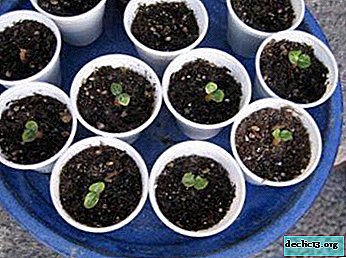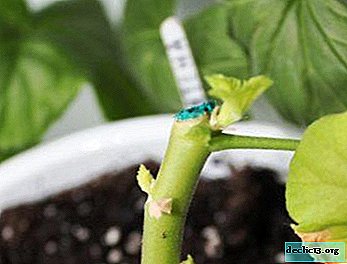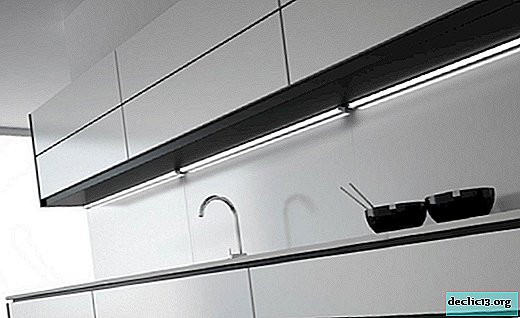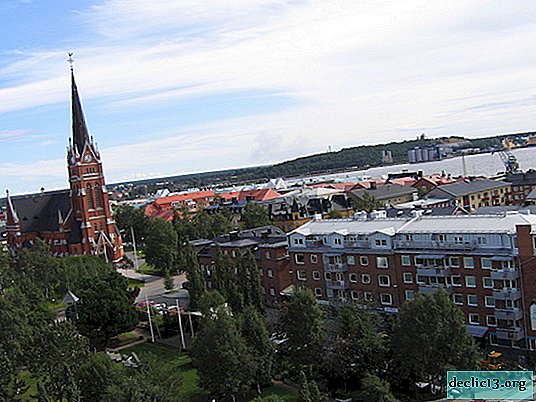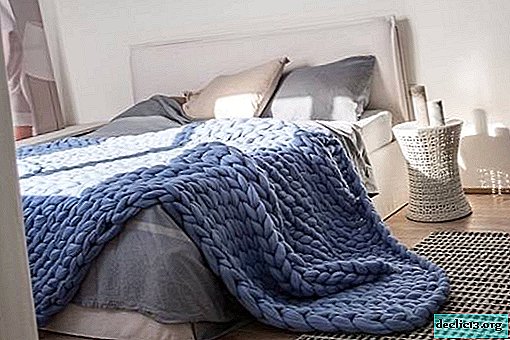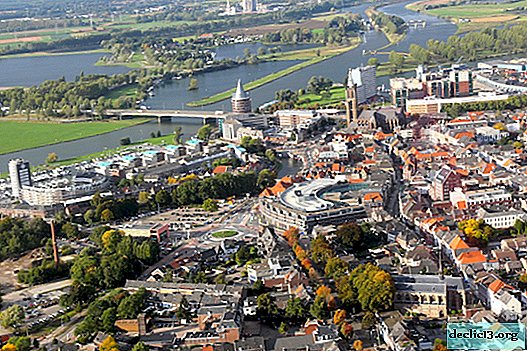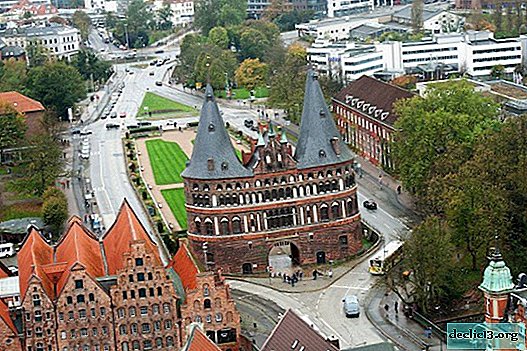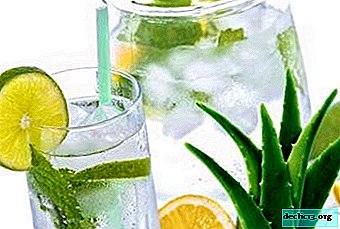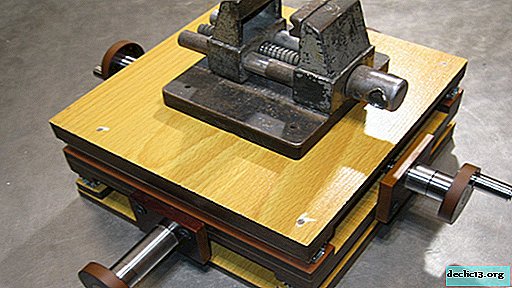Indoor plant Coral begonia: care and maintenance features
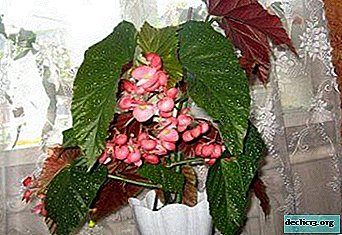
Coral begonia (Begonia coralina) "lives" in almost every grower. Such popularity is not surprising - a tropical beauty can delight the eye with bright inflorescences even in winter.
Let's take a closer look at what kind of plant it is, where it came from, what features it has and how to take care of it and fight against pests and diseases in order to enjoy the beauty of its spotty leaves and pale pink inflorescences all year round.
Botanical Description
Among begonias there are annual and perennial grasses, shrubs or shrubs with creeping or tuber-like thickened tuber-rhizomes (read about tuberous begonia here, and about bush-like here). Leaves are typically asymmetrical, often of bizarre coloring (especially in cultivated species). The flowers are irregular, unisexual, monoecious. Perianths are uneven, brightly colored. The fruit is a box.
Scientific classification
- Domain - Eukaryotes.
- Kingdom - Plants.
- Division - Flowering.
- Class - Dicotyledonous.
- Order - Pumpkins.
- Family - Begoniaceae.
- Rod Begonia.
- View - Begonia corallina (Begonia coral).
History reference
The homeland of coral begonia is considered tropical forests of Brazilwhere a wild bush grows to 1.5 meters in height. In the tropical and subtropical zones of Central and South America, this plant is cultivated as a garden.
In Russia, begonia coralline is grown as a houseplant. The Begoniaceae family includes more than 1600 species.
Interesting fact! The genus is named after the Governor of Haiti M. Begin (1638-1710)Appearance and features
 Coral begonia blooms with bright pink flowers. This plant has a bare straight stem, fleshy green leaves with whitish or silvery blotches. In summer, the underside of the leaves becomes a reddish hue, and their size can reach twenty centimeters.
Coral begonia blooms with bright pink flowers. This plant has a bare straight stem, fleshy green leaves with whitish or silvery blotches. In summer, the underside of the leaves becomes a reddish hue, and their size can reach twenty centimeters.
The crown of the plant is dense, with many cluster-shaped inflorescences. Under natural conditions, coral begonia is a shrub that can grow up to 2.5 m. In indoor conditions, this perennial plant usually reaches 90 cm in height and 40-50 cm in width.
Landing
Where?
It is important when planting coral begonia to choose the right container for growing. Clay pot is best - strong, without chemical impurities, slowly heating up. In addition, plants in clay and ceramic pots look more natural.
How?
Drainage is placed at the bottom - pebbles or expanded clay, soil is poured on top. It is better to use a light, well-permeable water and air, nutrient mixture.
If it is not possible to buy ready-made soil, you can take the usual one and, to make it looser, add a little perlite or vermiculite. In the soil of the pot, make a small depression and carefully plant the plant. To quickly strengthen the stalk, immediately pour plenty of water on the ground.
Care
Coral begonia - unpretentious plant. In a favorable climate, it can grow up to 1 meter in height and 50 cm in width, even in room conditions. In the summer, the plant must be systematically fed and properly moistened. Do not allow the soil to dry in a pot.
The key to the growth and proper development of coral begonia is heat and sufficient air humidity. Regularly moisten the air around the flower, avoiding moisture on the leaves. Due to the dry air and irregular watering, the tips of the begonia leaves can dry out.
In order for new flowers to develop freely, you need to regularly remove old dried inflorescences. Long stems are carefully trimmed (they can be used as cuttings).
Tip: To make coral begonia more bushy, and side shoots to be attractive and effective, systematically pinch the top of the plant.In the springtime, coral begonia can be transplanted into a permeable nutrient ground. In the summer season, the optimum air temperature for this species is + 20 ° C.
Coral begonia does not like direct sunlight, therefore, diffused lighting is preferable to it. However, in winter, the plant must be moved to the southern windows of the room. The optimum temperature in this period is + 15-16 ° C.
Common diseases
 Coral begonia is susceptible to certain diseases. The most common of them:
Coral begonia is susceptible to certain diseases. The most common of them:
- Shield- the leaves become sticky, brown spots appear on them.
Treatment: treat the plant with Aktara or another insecticide.
- Vascular bacteriosis - the leaves fade around the edges, but remain green. Brown spots are covered with oily drops. The vessels of the plant in the infected leaves turn black.
Treatment: at the initial stage, the affected parts are removed, and begonia is sprayed with drugs of the fungicide group.
- Gray rot - the leaves are covered with sticky watery spots with a gray coating, the leaves and stem begin to rot.
Treatment: the affected parts are removed, reduce air humidity, sprayed with 0.1% solution of the drug fundedala, 0.2% solution of topsin, 0.1% solution of euparen.
- Powdery mildew - leaves are covered with spots with white coating.
Treatment: the plant is isolated, sprayed with Fitosporin-M, Alirin-B, with severe infection - Topaz, Strobin.
Pests
- False shield - begonia is weakened, blooms poorly, the leaf brightens and is deformed, a bloom of sugar appearance is observed. The insect that struck the plant is transparent, covered with a yellowish waxy coating, up to 5 mm in size. The false shield and its larvae populate the edges of the leaf and feed on the juice, which entails its weakening and death.
Ways of protection:
- spraying with any pesticide for indoor plants;
- sprinkling garlic in the mood (10 grams of garlic per 1 liter of water, repeat spraying after 12-14 days).
- Aphid - the leaf turns yellow, on its underside, clusters of oval-shaped insects up to 2.5 mm in size, yellowish or greenish in color, are clearly visible. The insect and its larvae feed on sap, weakening the plant, and can carry dangerous viral diseases.
Ways of protection:
- spray with any insecticide;
- spray with a solution of laundry soap (20-30 grams per 1 liter of water);
- spray the mood of shag (20 g per 1 liter of water, insist for two days).
- Diptera - the leaves turn yellow, on their underside you can find insects up to 1.5 mm in size with two pairs of wings covered with white coating.
Methods of protection: regularly spray with a solution of laundry soap (40 g per 1 liter of water).
- Thrips - begonia strongly lags in growth, leaves become discolored, turn yellow, they can be seen on brown insects up to 1.5 mm in size with two pairs of wings.
Ways of protection:
- spraying with a solution of laundry soap;
- spraying with infusion or a decoction of tobacco (100 g per 1 liter of water).
- Gallova nematode - causes rotting of the root system and death of the plant, begonia slows down in growth. A worm up to 1.2 mm long populates the roots and lower part of the stem.
Way of protection: pour heterophos under the root.
- Nematode - bright spots appear on the leaves, shoots thicken, heavily affected specimens die.
Method of protection: treat the plant with a heterophos solution.
Propagation Features
Coral begonia propagates by seeds, cuttings or by dividing the bush. Cuttings are the most common breeding method. In the spring-summer period, non-blooming stems are cut from the plant, while the length under the bottom sheet should be at least ten centimeters.
The lower leaves are torn off, and the cuttings are placed in a container with a mixture of wet peat and coarse sand (in a 1: 1 ratio). Cuttings are watered, and a “greenhouse” is made from the pot using polyethylene and rubber. Before the roots appear, the cuttings are placed in a room with a temperature of 18 ° C.
Tip: Coral begonia looks beneficial in a pot with a stand. This plant will noticeably decorate a table, window sill, pedestal or other surface of similar height.Conclusion
Coral begonia, unlike most other exotic plants, does not require special care. Get yourself this Brazilian beauty, and she will warm you with her flowering all year round!


